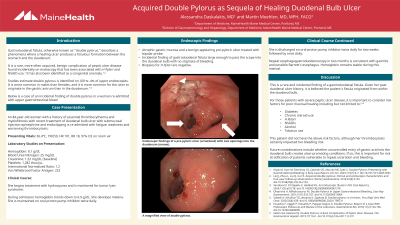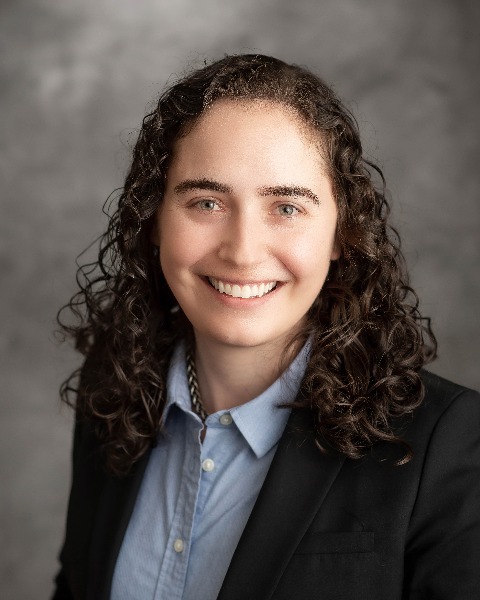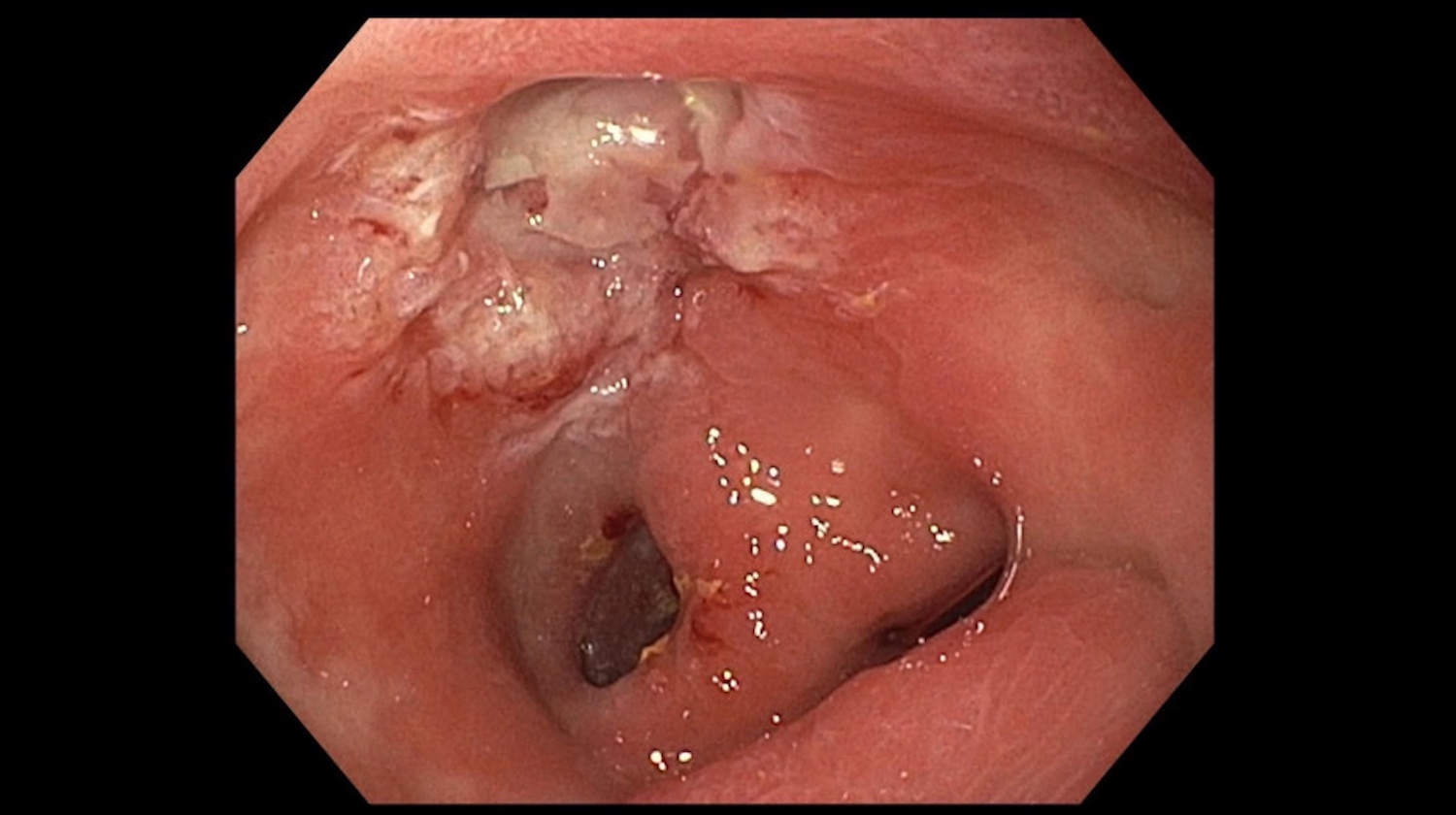Monday Poster Session
Category: General Endoscopy
P2423 - Acquired Double Pylorus as Sequela of Healing Duodenal Bulb Ulcer
Monday, October 28, 2024
10:30 AM - 4:00 PM ET
Location: Exhibit Hall E

Has Audio

Alessandra Daskalakis, MD
Maine Medical Center
Portland, ME
Presenting Author(s)
Alessandra Daskalakis, MD, Martin Moehlen, MD, MPH, FACG
Maine Medical Center, Portland, ME
Introduction: Gastroduodenal fistula, otherwise known as “double pylorus”, is a rare, more often acquired, benign complication of peptic ulcer disease found incidentally on endoscopy that has been associated with H Pylori and NSAID use.
Case Description/Methods: An 84-year-old woman with a history of proximal duodenal bulb ulcer treated with submucosal injection epinephrine and endoclipping was readmitted for melena and fatigue. Upper endoscopy revealed atrophic gastric mucosa and a benign-appearing pre-pyloric ulcer treated with bipolar probe. There was also incidental finding of a gastroduodenal fistula large enough to pass the scope into the duodenal bulb, with no stigmata of bleeding. This finding was not previously identified on endoscopy two weeks prior and is consistent with the location of the past ulcer, suggesting a possible sequalae of healing. She was discharged on oral proton pump inhibitor twice daily for two weeks followed by once daily. H Pylori testing was negative.
Discussion: While rare and often incidental, the presence of a gastroduodenal fistula highlights both the resilience of the gastric mucosa and helps to estimate future risk for ulceration, as the entry of gastric acid into the duodenal bulb outside of the regulation of the true pylorus may expose the alkaline duodenum to ulcer-promoting conditions.

Disclosures:
Alessandra Daskalakis, MD, Martin Moehlen, MD, MPH, FACG. P2423 - Acquired Double Pylorus as Sequela of Healing Duodenal Bulb Ulcer, ACG 2024 Annual Scientific Meeting Abstracts. Philadelphia, PA: American College of Gastroenterology.
Maine Medical Center, Portland, ME
Introduction: Gastroduodenal fistula, otherwise known as “double pylorus”, is a rare, more often acquired, benign complication of peptic ulcer disease found incidentally on endoscopy that has been associated with H Pylori and NSAID use.
Case Description/Methods: An 84-year-old woman with a history of proximal duodenal bulb ulcer treated with submucosal injection epinephrine and endoclipping was readmitted for melena and fatigue. Upper endoscopy revealed atrophic gastric mucosa and a benign-appearing pre-pyloric ulcer treated with bipolar probe. There was also incidental finding of a gastroduodenal fistula large enough to pass the scope into the duodenal bulb, with no stigmata of bleeding. This finding was not previously identified on endoscopy two weeks prior and is consistent with the location of the past ulcer, suggesting a possible sequalae of healing. She was discharged on oral proton pump inhibitor twice daily for two weeks followed by once daily. H Pylori testing was negative.
Discussion: While rare and often incidental, the presence of a gastroduodenal fistula highlights both the resilience of the gastric mucosa and helps to estimate future risk for ulceration, as the entry of gastric acid into the duodenal bulb outside of the regulation of the true pylorus may expose the alkaline duodenum to ulcer-promoting conditions.

Figure: Figure shows endoscopic findings of a pre-pyloric ulcer with two openings into the duodenum.
Disclosures:
Alessandra Daskalakis indicated no relevant financial relationships.
Martin Moehlen: Gilead Sciences, Inc – Speakers Bureau. Intercept Pharmaceuticals, Inc – Speakers Bureau.
Alessandra Daskalakis, MD, Martin Moehlen, MD, MPH, FACG. P2423 - Acquired Double Pylorus as Sequela of Healing Duodenal Bulb Ulcer, ACG 2024 Annual Scientific Meeting Abstracts. Philadelphia, PA: American College of Gastroenterology.
